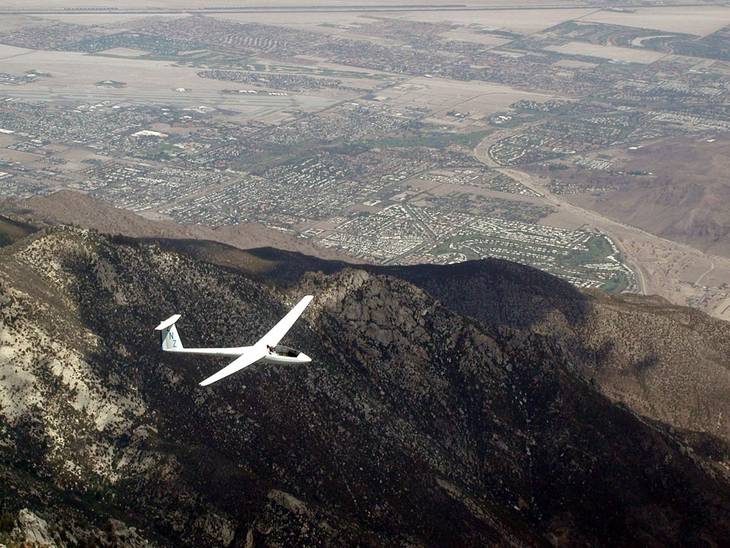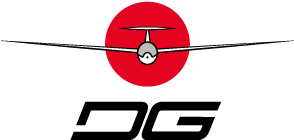VON THOMAS BERGMANN,
published in the magazine “Segelfliegen” in 2004
After the great success of the LS1 in the standard class the successor LS3 was considered to continue this success with the same fuselage but with a new wing including flaps from the Rolladen-Schneider company located in Egelsbach. Concerning the 15m class the LS3 is still ranked on place 3 according to the ratings. 156 are fit to service in Germany, behind ASW20 and LS8.

The fuselage originates from the LS1-f with to the front opening one-piece canopy, a sealed retractable gear with a rubber spring system and foot break, and with a T-tail-unit with a damped elevator. The cockpit was build in a multilayer technique, the head rest and the seat back were adjustable. The vertical tail of the LS3 was enlarged in order to improve the the stability during cycling and for the straight on flight.The flaperons, a combination of ailerons and flaps, extend over the whole span and are the main difference of the new 15m class LS3 released in 1976 compared to the former standard class LS1.
Untypical for Rolladen-Schneider are the fairly even leading and trailing edge but giving the LS3 an elegant appearance. The heavy metal incorporated within the flaps in order to balance these made sure that the pilots got displeased who had to mount the 85 kg heavy wings, which lead on the one hand to the nickname “LS-Blei” (maybe translated as “LS-Lead”) and on the other hand to a well high empty weight of 270 kg.
The LS3 has automatic connections of the ailerons, the flaps and the air brakes. The used Wortmann profile FX 67-K-170 is widely spread in the aircraft construction of gliders and the relatively thick wing allows for excellent climbing at the expense of the high speed flight properties. The rudder gap is sealed with a foil. To the top deploying and very effective Schempp-Hirth air brakes facilitate approaches. The deploying of the air brakes sets automatically the flaps to their landing position.
Since 1978 the LS3-a was build which passed on the mass balance of the flaps so that the gained weight was used in order to increase the water ballast from 120 to 150 kg. With the optional 17m wing tips the charging of water ballast is not allowed due to stability reasons, because the wings were fabricated as a glass-fibre reinforced plastic sandwich construction and hence the wings would have needed a reinforced spar.
To allow a slower approach speed the flaps of the LS3-a could be lowered down to 20¡, the air forces of the ailerons were reduced due to separating the ailerons from the flaps. However, the ailerons were now manually operated during mounting. In the meantime there are winglets admitted for the LS3 too.
At the German Championships of 1980 13 out of 33 pilots flew a LS3 or LS3-a in the 15m class. At that time five new women world records were flown, still the speed record over a 500 km triangle with 133,14 km/h of Susan Martin from Australia is not surpassed.
In 1986 the LS6 superseded the LS3 after 429 planes build.
The prizes for a second-hand LS3-a including the trailer range from 20 to 22.000 Euro. However, the LS3 and LS3-a are predominantly in private ownerships therefore you will find it seldom on the market.
Currently there are 59 LS3, 69 LS3-a and 28 LS3-17 admitted in Germany.
Translation: Holger Kuhn

3-aspect view
List of Spare Parts
additional Photos of the LS3
Type Certificat Holder:
DG Flugzeugbau GmbH
Otto-Lilienthal-Weg 2 / Am Flugplatz
D-76646 Bruchsal
Telephon: +49 (0) 72513020-0
e-mail: info@ls-flugzeugbau.de
internet: www.ls-flugzeugbau.de
former Manufacturer:
